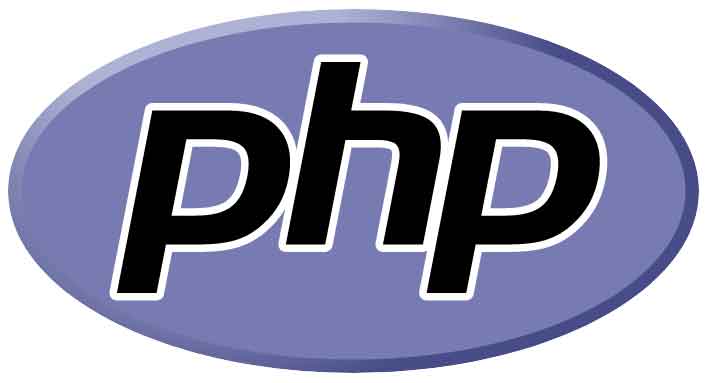Show:
Creating Interactive Web Applications with PHP: 8 Tips for Success
In the rapidly evolving world of web development, creating interactive and user-friendly applications is essential for engaging users and delivering a seamless user experience. PHP, being one of the most popular server-side scripting languages, offers numerous features and flexibility to build dynamic web applications. Whether you’re a seasoned developer or new to the field, understanding how to leverage PHP effectively can significantly impact the success of your projects. In this blog, we’ll explore eight essential tips that will help you create interactive web applications with PHP, enhancing both functionality and performance.

Understand the Basics of PHP
Before diving into advanced PHP techniques, it’s crucial to have a firm grasp of the basics. PHP, which stands for Hypertext Preprocessor, is an open-source scripting language primarily designed for web development. It is embedded into HTML and runs on the server, making it an ideal choice for creating dynamic content. Utilizing custom PHP solutions allows developers to create interactive and responsive web applications that can handle user input, process data, and connect with databases. So, if you’re new to PHP, spend some time familiarizing yourself with its syntax, functions, and capabilities. This foundation will help you build more complex and efficient applications in the future.
Utilize PHP Frameworks
Once you’ve mastered the basics of PHP, incorporating frameworks into your development process can streamline your workflow and improve the overall quality of your applications. PHP frameworks, such as Laravel, Symfony, and CodeIgniter, provide a structured foundation for building robust web applications with best practices in mind. They offer pre-built modules, libraries, and tools, which can help reduce development time and minimize errors. Using custom PHP frameworks can also make your code more maintainable and scalable, allowing for future updates and enhancements.
Implement Secure Coding Practices
Security should always be a top priority when developing web applications, and PHP is no exception. Implementing secure coding practices helps protect your applications from vulnerabilities, such as SQL injection, cross-site scripting (XSS), and cross-site request forgery (CSRF). Start by validating and sanitizing all user inputs to ensure that malicious data does not enter your system. To prevent SQL injection, use prepared statements and parameterized queries. It’s also crucial to encode output to prevent XSS attacks by escaping HTML characters. Additionally, implement CSRF tokens to safeguard against unauthorized actions. Regularly updating your PHP version and libraries can help address known security flaws, making your applications more resilient to threats.
Optimize Database Interactions
Efficient database interactions are vital for the performance and responsiveness of your web applications. PHP offers several methods to optimize these interactions, ensuring smoother operations and improved load times. Begin by using indexes on your database tables to expedite search queries and reduce the overall data retrieval time. Structuring your SQL queries efficiently can also have a significant impact; avoid SELECT * statements in favor of specifying only the required columns.
Implement caching strategies, such as using Memcached or Redis, to store frequently accessed data and reduce the load on your database server. Managing connections using persistent connections or connection pooling can improve performance by decreasing the overhead associated with establishing new connections. Finally, consider the benefits of database normalization to minimize redundancy and ensure data integrity while balancing it with denormalization techniques where necessary to enhance read performance for complex queries.

Incorporate AJAX for Dynamic Updates
To enhance the interactivity and responsiveness of your PHP web applications, consider incorporating AJAX (Asynchronous JavaScript and XML) for dynamic updates. AJAX allows you to update parts of a web page without reloading the entire page, providing a more seamless user experience.
By integrating AJAX, you can fetch data from the server asynchronously, process server responses, and update the user interface with minimal delay. This technique is particularly useful for implementing features like infinite scrolling, real-time notifications, and asynchronous form submissions. Start by understanding the basics of AJAX requests using JavaScript or jQuery, and learn how to efficiently handle these requests on the server side with PHP. Combining AJAX with PHP can elevate your application’s performance and interactivity, offering users a smooth, real-time experience.
Utilize PHP Testing Tools
Ensuring the reliability and stability of your PHP applications is paramount, and utilizing testing tools can play a significant role in achieving this. PHP offers a variety of testing frameworks and tools, such as PHPUnit, Codeception, and Behat, which are designed to simplify the testing process and ensure code quality. PHPUnit is a widely used unit testing framework that allows you to test individual components of your application to verify their correctness. Custom PHP solutions can also take advantage of Codeception, a functional testing tool that simulates user interactions to ensure proper functionality. Behat is another popular testing framework that uses human-readable language to describe application behavior and automate the testing process. Incorporating these tools into your development process can help identify bugs early on and improve the overall quality of your PHP applications.
Leverage PHP Libraries
PHP libraries provide an extensive range of pre-built functions and modules that developers can use to add complex features to web applications without starting from scratch. By leveraging these libraries, you can significantly cut down on development time while enhancing your application’s capabilities. Popular libraries such as Guzzle for HTTP requests, PHPMailer for handling emails, and Carbon for date and time manipulation simplify tasks that would otherwise require significant custom coding. Additionally, the use of open-source libraries means tapping into a constantly updated resource backed by a community of developers, ensuring that your applications stay current with industry standards. When integrating third-party libraries, always check for compatibility with your PHP version and maintain an awareness of any security advisories.
Foster Collaboration and Community Learning
Embracing collaboration and involving yourself in community learning are invaluable practices that can enrich your PHP development experience. By engaging with the broader PHP community, you gain exposure to diverse perspectives and innovative problem-solving techniques. Community platforms such as GitHub, Stack Overflow, and PHP-focused forums allow you to connect with other developers, share knowledge, and collaborate on projects.
Participating in community forums or attending local PHP meetups and conferences can also provide you with valuable networking opportunities and access to the latest industry trends and tools. Contributing to open-source PHP projects not only hones your skills but also helps you establish a reputation as an active member of the development community.
Creating interactive web applications with PHP requires a blend of foundational knowledge, strategic practices, and community engagement. By mastering the basics of PHP and leveraging frameworks, developers can streamline their workflows and build robust applications. Emphasizing secure coding practices and optimizing database interactions are crucial for maintaining the security and performance of your applications. Utilizing AJAX for dynamic updates and incorporating testing tools ensures your applications are interactive and reliable. Additionally, leveraging libraries and fostering collaborative learning through community involvement can significantly enhance your development skills and keep you abreast of the latest advancements in PHP.

 Return to Previous Page
Return to Previous Page








